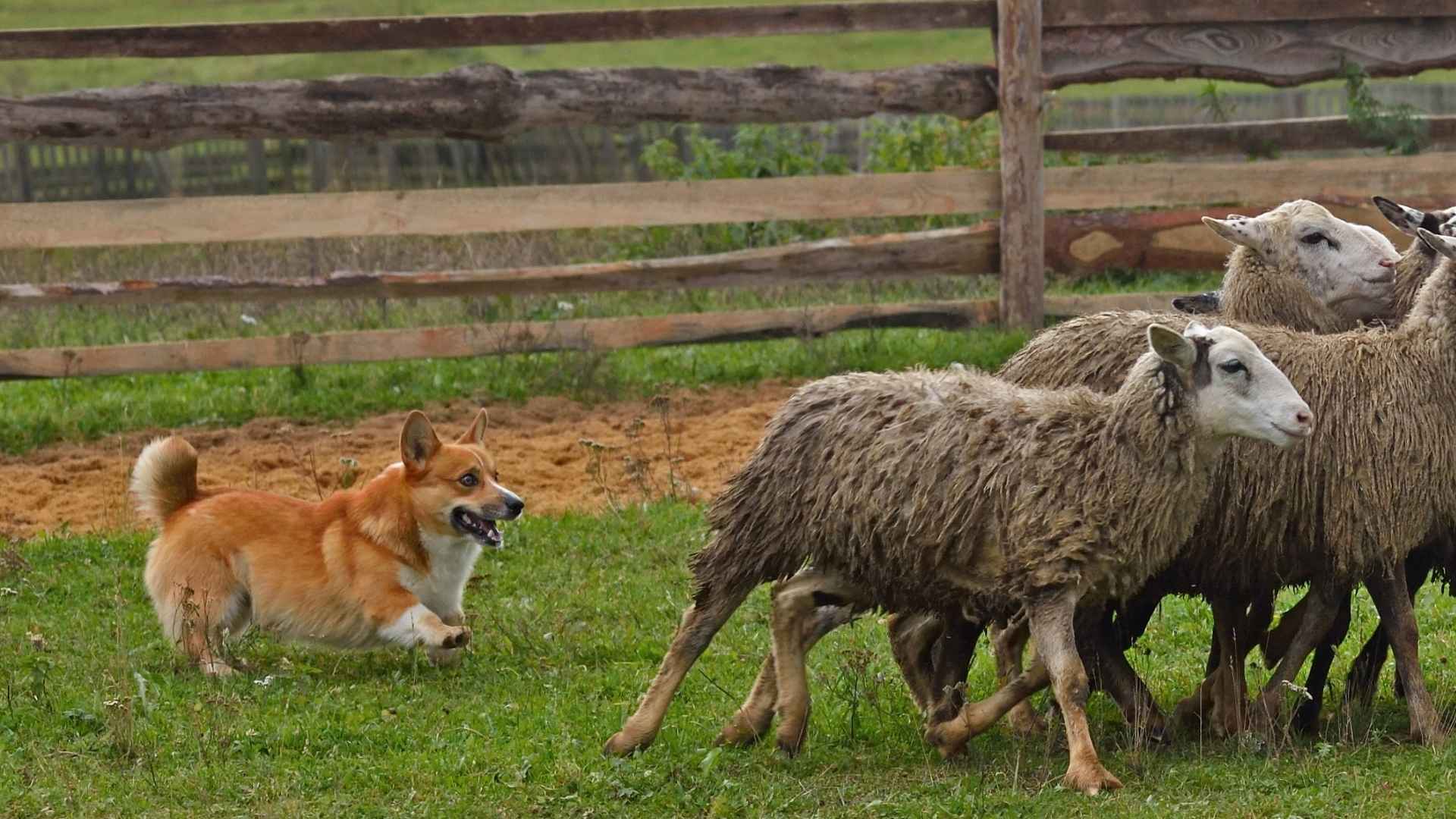Life on the ranch doesn’t slow down—and neither do the dogs that thrive on it. When the rooster crows, these hard-working canines are already on duty—herding cattle, guarding property, or chasing off critters like they own the place (because, in their minds, they do).
Ranch dog breeds aren’t just pets—they’re partners in boots of fur, known for their stamina, intelligence, and loyalty.
Whether it’s a Border Collie expertly rounding up sheep or an Australian Cattle Dog playing watchdog from the porch, these dogs come with a serious work ethic—and a whole lot of heart. Built for big skies, open fields, and sunup-to-sundown hustle, ranch dogs are as rugged as they are reliable.
So, if you need a companion that can keep up with the land and love you fiercely, this list is your goldmine. We’re rounding up the best dog breeds for ranch living—no tractor required.
Ranch Dog Breeds
1. Australian Shepherd
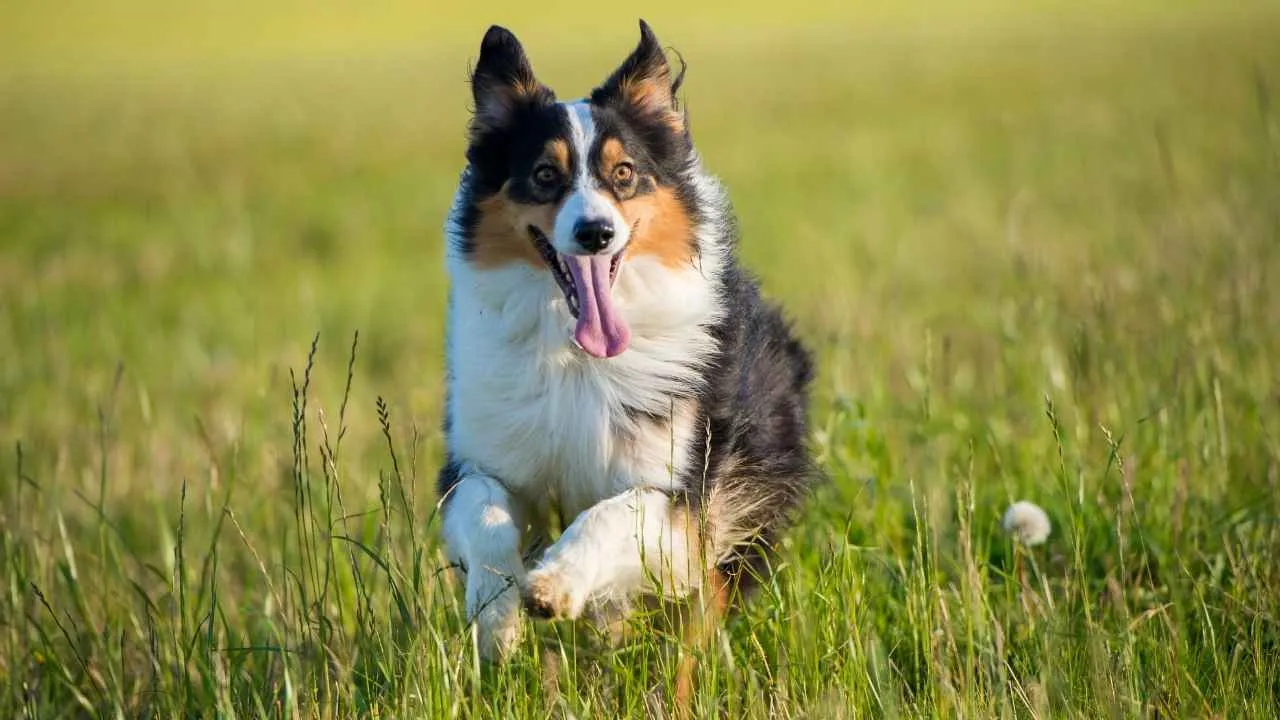
Don’t be fooled by the “Australian” in the name—this whip-smart, high-energy breed is all-American ranch royalty. The Australian Shepherd, or “Aussie” to friends (which is everyone), is a herding machine with a heart of gold and legs that just. Don’t. Quit.
Originally bred to herd sheep across rough Western terrain, Aussies thrive on wide-open acres where they can work—whether that’s herding cattle, chasing rogue chickens, or supervising every squirrel movement within a 3-mile radius. And they don’t just do the job… they do it with flair.
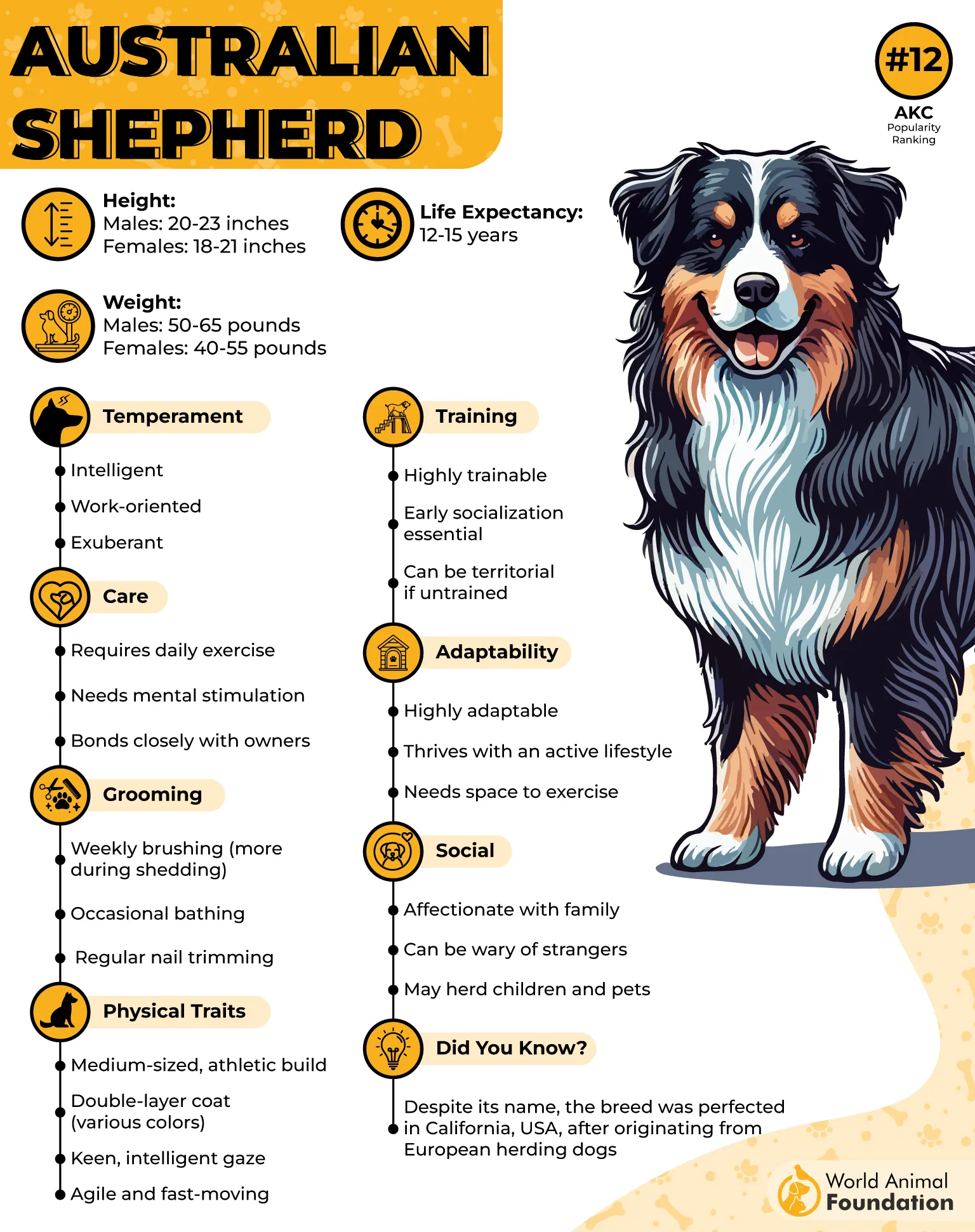
These dogs are not couch potatoes—they’re ranch athletes with a side of goofball energy and a love for their humans so deep, they might try to herd the whole family into one room just to feel safe.
Work Style: Tireless and laser-focused. Will herd anything that breathes (and a few things that don’t).
Temperament: Loyal, sharp as a tack, a little bossy, but always eager to please.
Energy Level: Off-the-charts. Backyard zoomies are mandatory.
Best Job: Everything from livestock wrangling to family entertainment coordinator.
PetMD noted that because Australian Shepherds have such energetic lifestyles and temperaments, their owners should pay close attention to their joint and hip health to maintain good mobility throughout their lives.
Pro Tip: If you don’t give an Aussie a job, it will assign itself one—like hole digging, cat organizing, or baby monitor duty.
2. Great Pyrenees
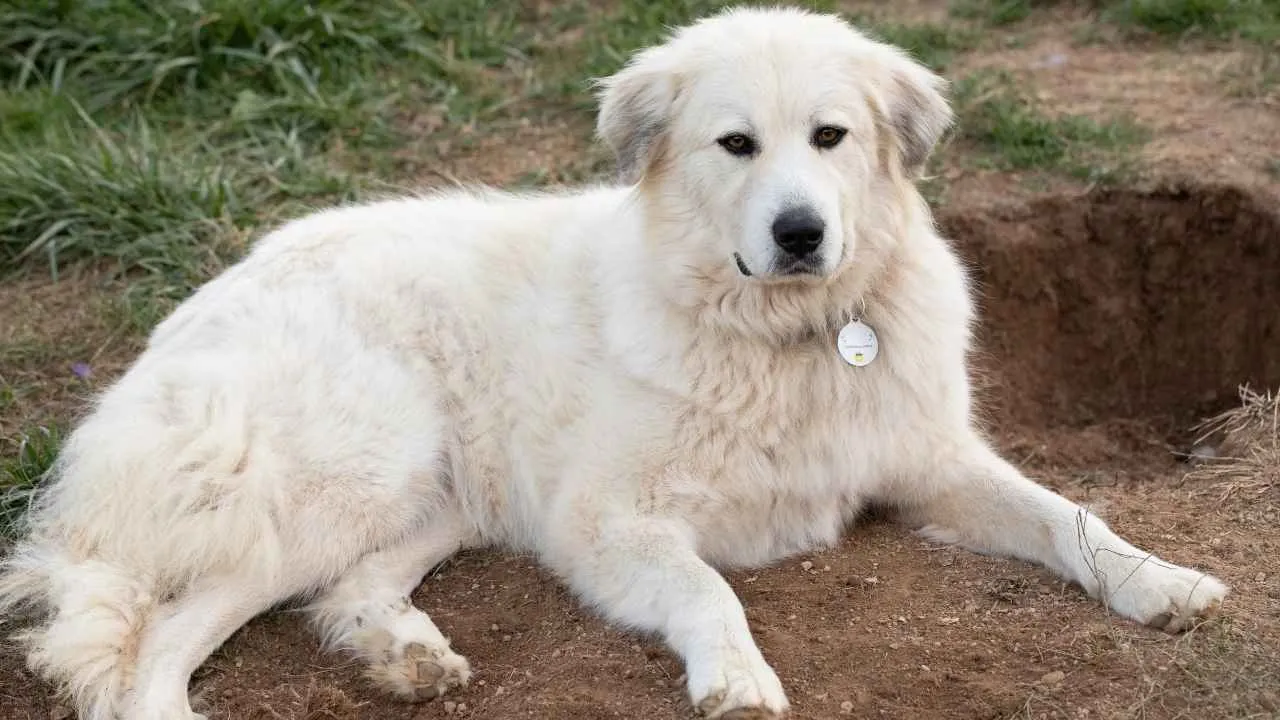
The Great Pyrenees isn’t herding livestock—it’s protecting them like a stoic, cloud-colored bodyguard. Towering, majestic, and wrapped in a thick coat of pure fluff, this ancient guardian breed was developed in the Pyrenees Mountains to ward off wolves, bears, and anything else that dared threaten the flock.
Because they protect livestock from large predators, Great Pyrenees are impressively sized dogs. They stand between 25 and 32 inches tall at the shoulder, with females averaging around 85 pounds and males tipping the scales at over 100 pounds.
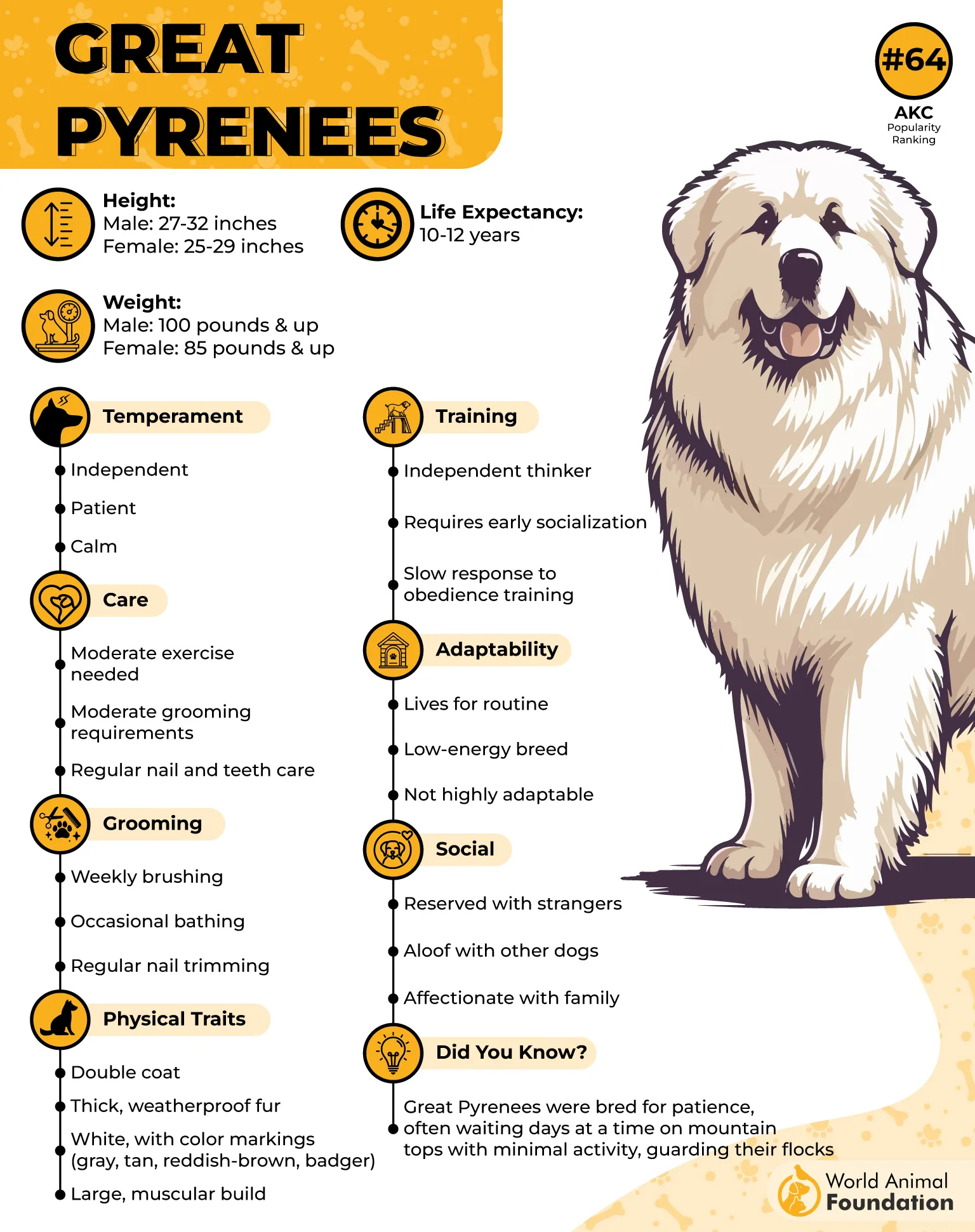
Today, they bring that same fearless energy to ranches across America, where their presence alone is often enough to make predators think twice. Coyotes? Not on their watch. Stray dogs? Not today. Human intruders? Hope they brought snacks and an apology.
Despite their size, Great Pyrenees are surprisingly gentle with their own animals and humans—like giant marshmallows with security training.
Temperament: Calm, stoic, and fiercely protective—but patient and affectionate with their “flock.”
Size: Massive. Like, “block-the-doorway” massive.
Skill Set: Night guard, predator deterrent, and possibly undercover philosopher.
Best Job: Livestock guardian in remote or predator-prone areas.
Despite their strength and speed, Great Pyrenees are typically gentle and calm at home, especially around their loved ones, making them wonderful family companions. While they aren’t highly energetic, they do enjoy spending time roaming outdoors. It’s essential to keep them within a securely fenced area to prevent wandering too far and getting lost.
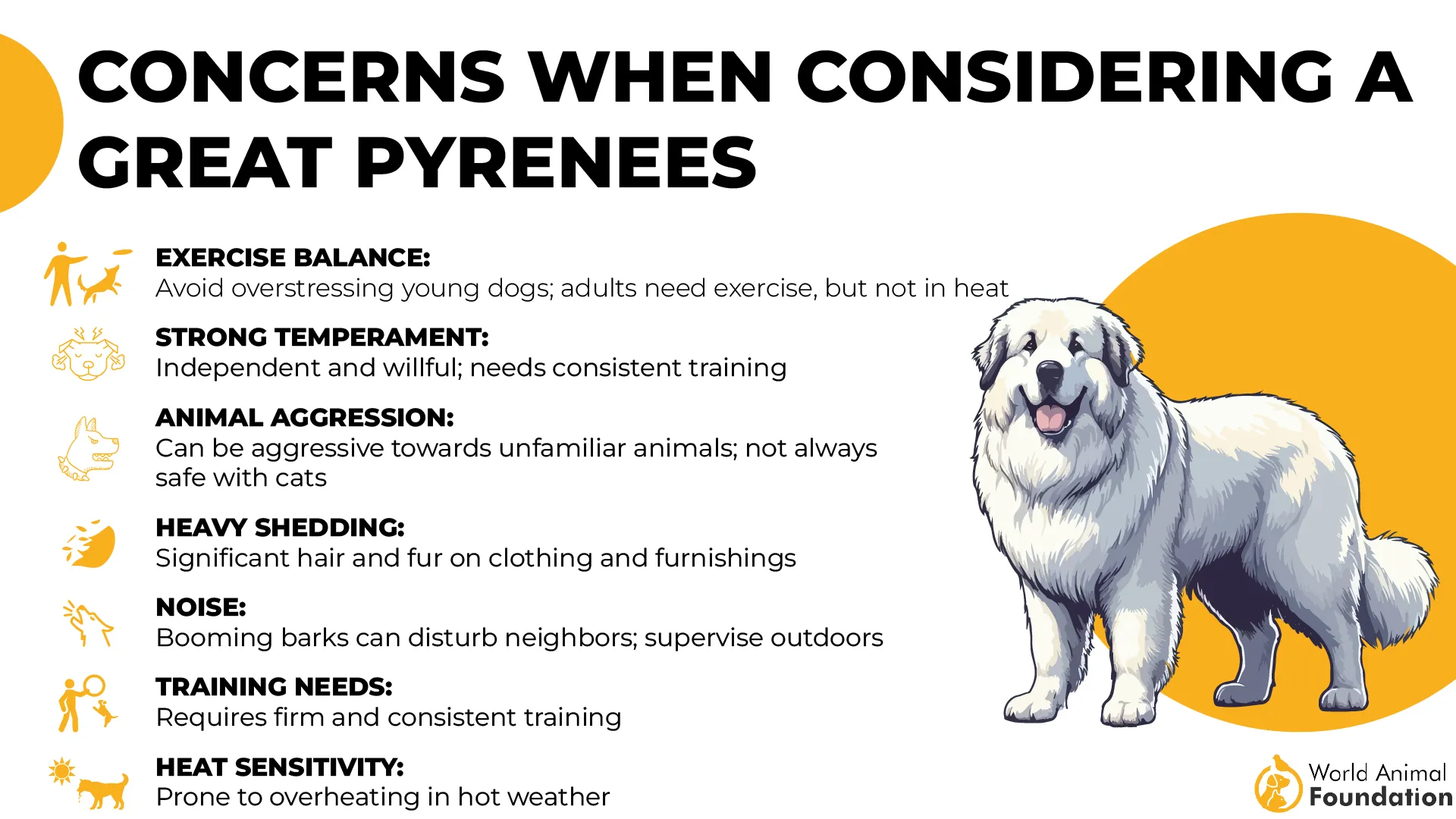
Bonus Mood: These dogs often patrol all night and sleep all day. So if your chickens are mysteriously safe and your Great Pyrenees is snoring on the porch at noon… that’s just him clocking out.
3. Australian Cattle Dog
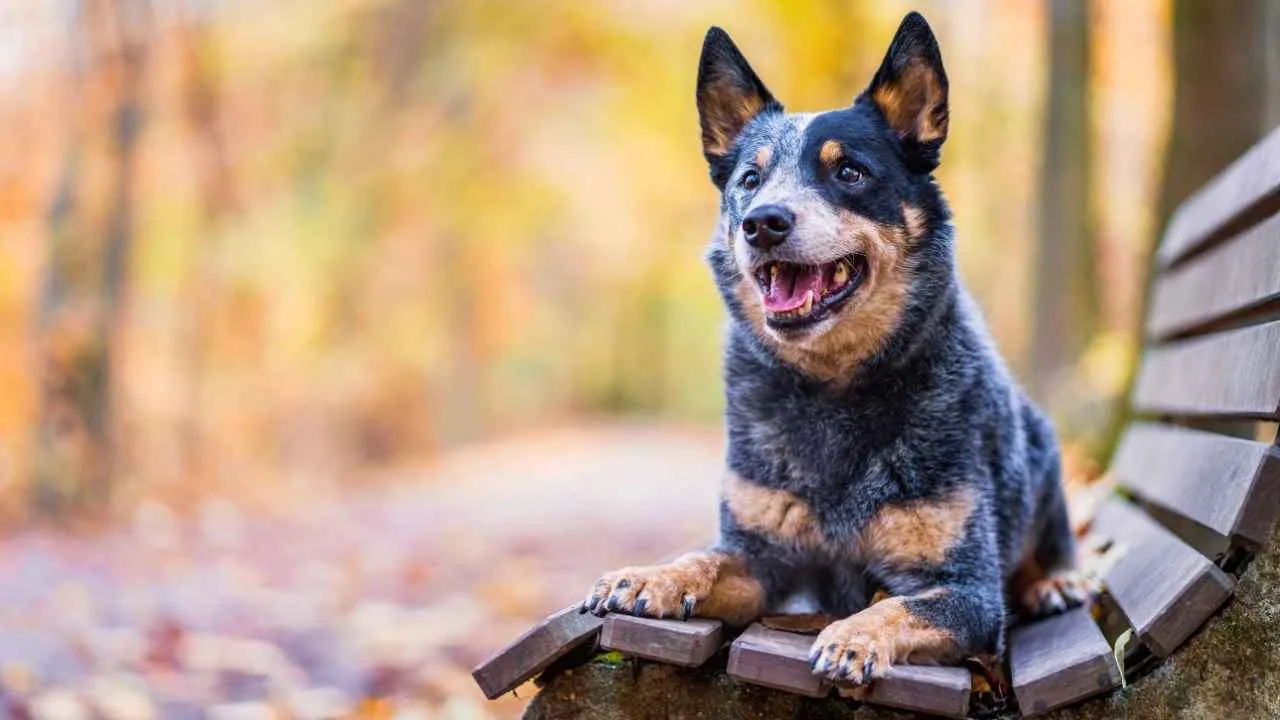
If you need a no-nonsense, high-octane workaholic to keep your ranch running like a well-oiled machine, enter the Australian Cattle Dog—also known as the Blue Heeler (aka the “Why-isn’t-anyone-working?” dog).
This medium-sized breed was made for the Outback, but it fits right in on any ranch where grit, brains, and determination are a daily necessity. Australian Cattle Dogs are the kind of dogs that clock in before sunrise and still have enough gas in the tank to play fetch at night.
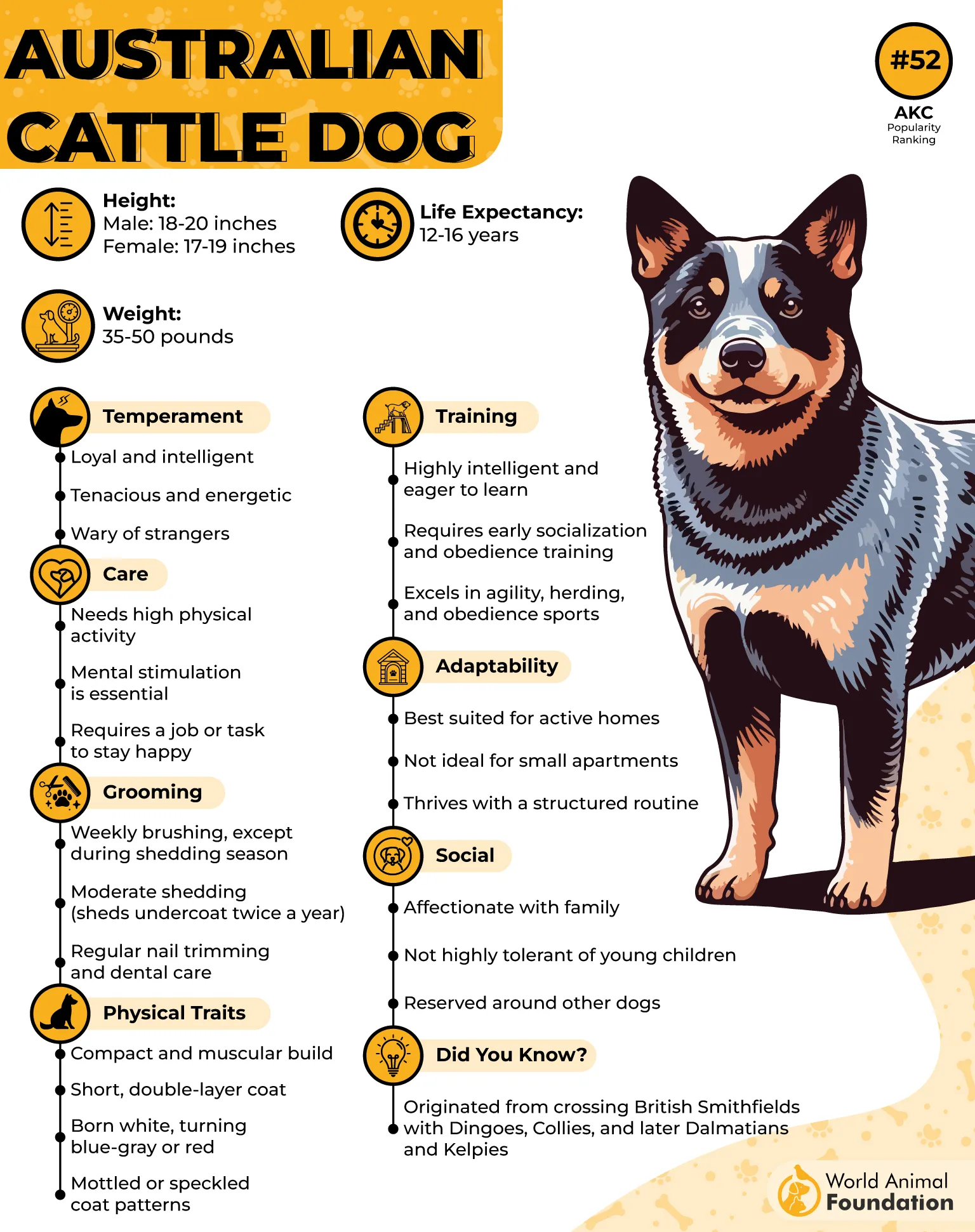
They herd with surgical precision, outthink the livestock, and aren’t afraid to throw in a heel-nip or two to get the job done. And with their compact, muscular build and weather-resistant coat, they’re as tough as the cattle they push around.
Work Drive: Relentless. Don’t give them a job? They’ll find one. Possibly involving your furniture.
Durability: All-terrain. Rain, sun, mud, chaos—they eat it for breakfast.
Temperament: Loyal, alert, and stubbornly independent. Basically, a furry cowboy.
Best Job: Herding cattle with ninja-like efficiency and guarding the ranch like a four-legged sentinel.
Like many working breeds, the Australian Cattle Dog is highly energetic, mentally sharp, and quite independent. Ranked 10th in Stanley Coren’s The Intelligence of Dogs, this breed is known for its exceptional obedience and trainability, as per Wikipedia.
To stay happy and healthy, Australian Cattle Dogs require plenty of exercise, social interaction, and a purpose. For those not working on a farm, engaging them in dog sports, trick training, or other stimulating activities helps keep both their bodies and minds active.
4. Bernese Mountain Dog
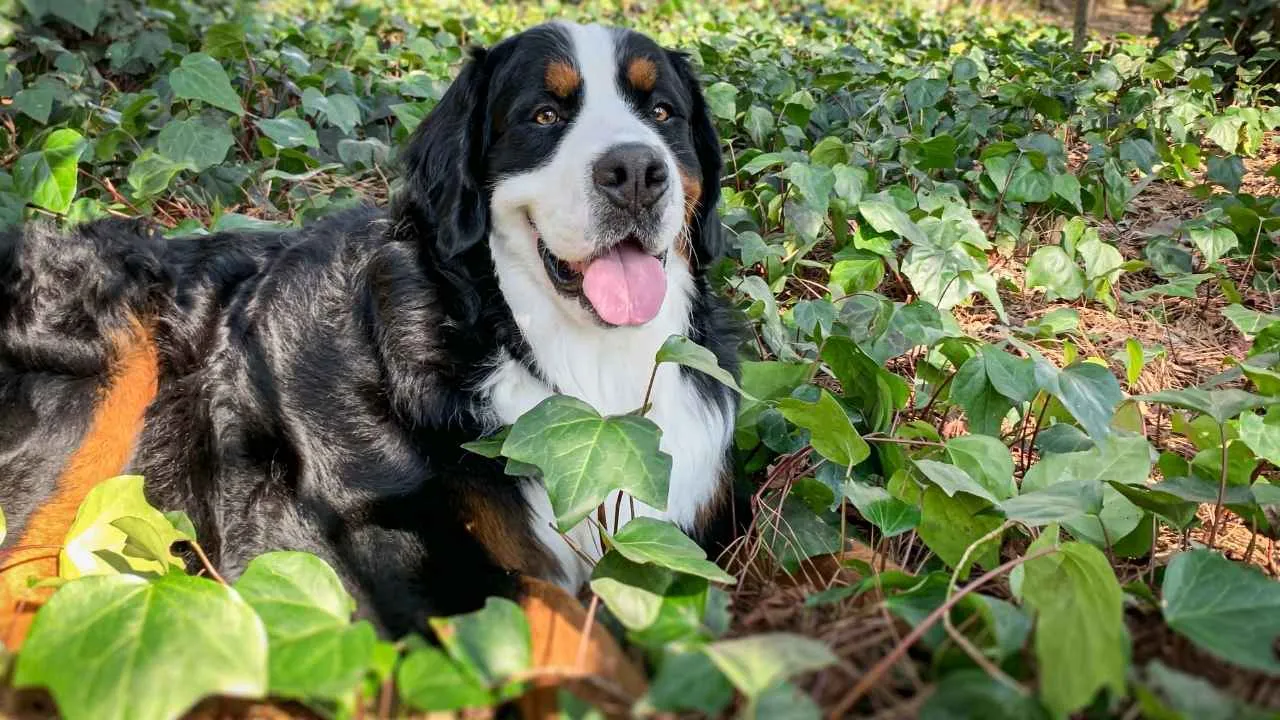
Think of the Bernese Mountain Dog as the gentle giant of the ranch world—equal parts workhorse and teddy bear.
Bred primarily in the snowy Swiss Alps, these large dogs were made to haul carts, manage cattle, and look majestic while doing it. They may not be traditional herders like the Border Collie, but when it comes to pulling their weight—literally—they’re as ranch-ready as they come.
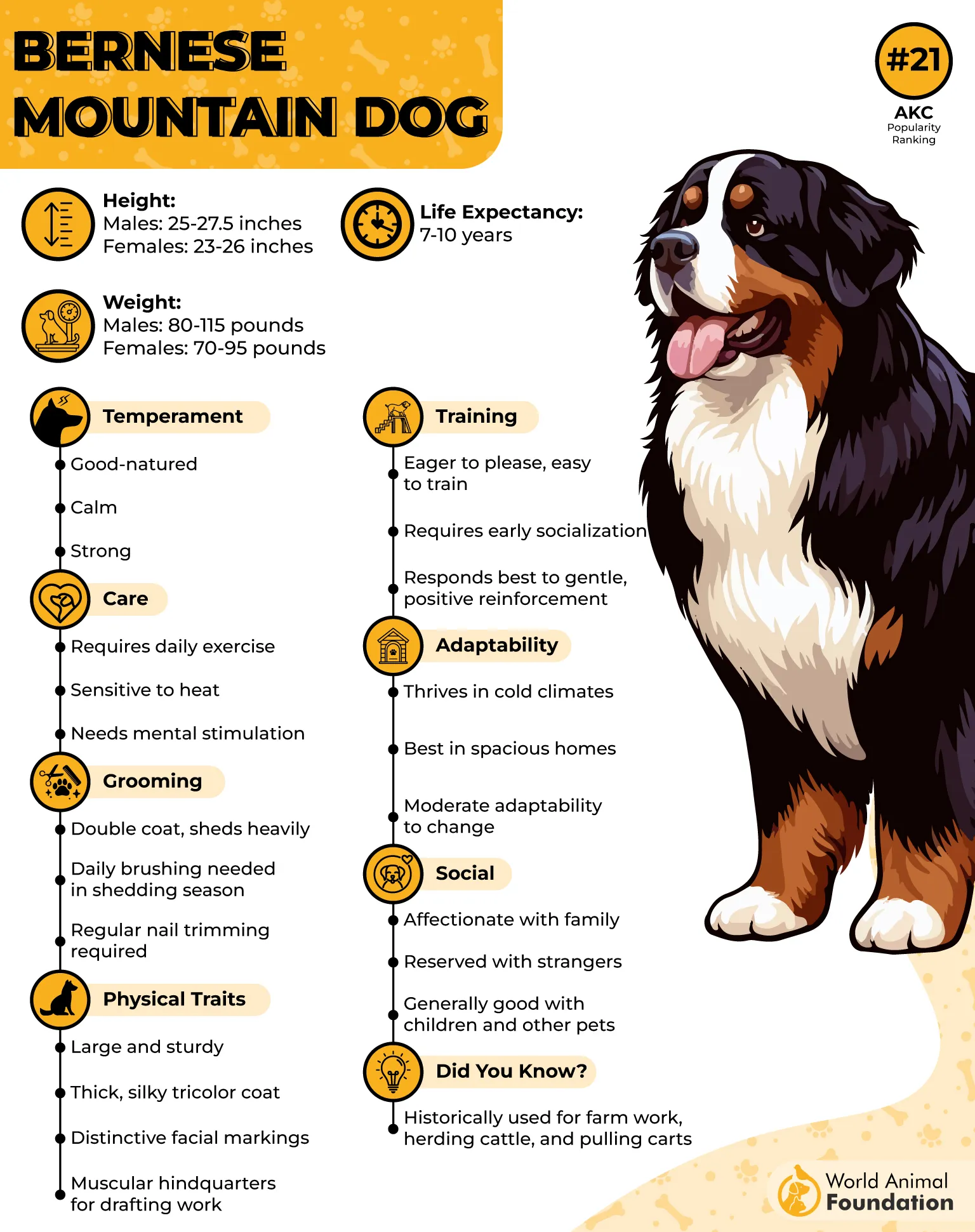
With their thick, tri-colored coats and soulful eyes, Berners look like they just walked out of a Hallmark movie… but don’t let the fluff fool you. They’re strong, alert, and incredibly loyal. Whether it’s guarding the livestock or acting as a living snowplow in winter, this breed thrives in rugged conditions with a big job to do.
Strength: Built like a draft horse in a dog suit.
Climate Tolerance: Cold weather? Bring it on. They’re basically walking winter gear.
Personality: Calm, affectionate, and protective—but not overly aggressive.
Best Job: Pulling carts, guarding livestock, and warming your heart (and your feet).
Because of their thick coat, Bernese Mountain Dogs are sensitive to heat and should be kept indoors during hot weather to avoid overheating. Sharing your home with a Bernese Mountain Dog also means preparing for heavy shedding, so having a powerful vacuum cleaner and plenty of lint rollers on hand is a must.
5. Border Collie
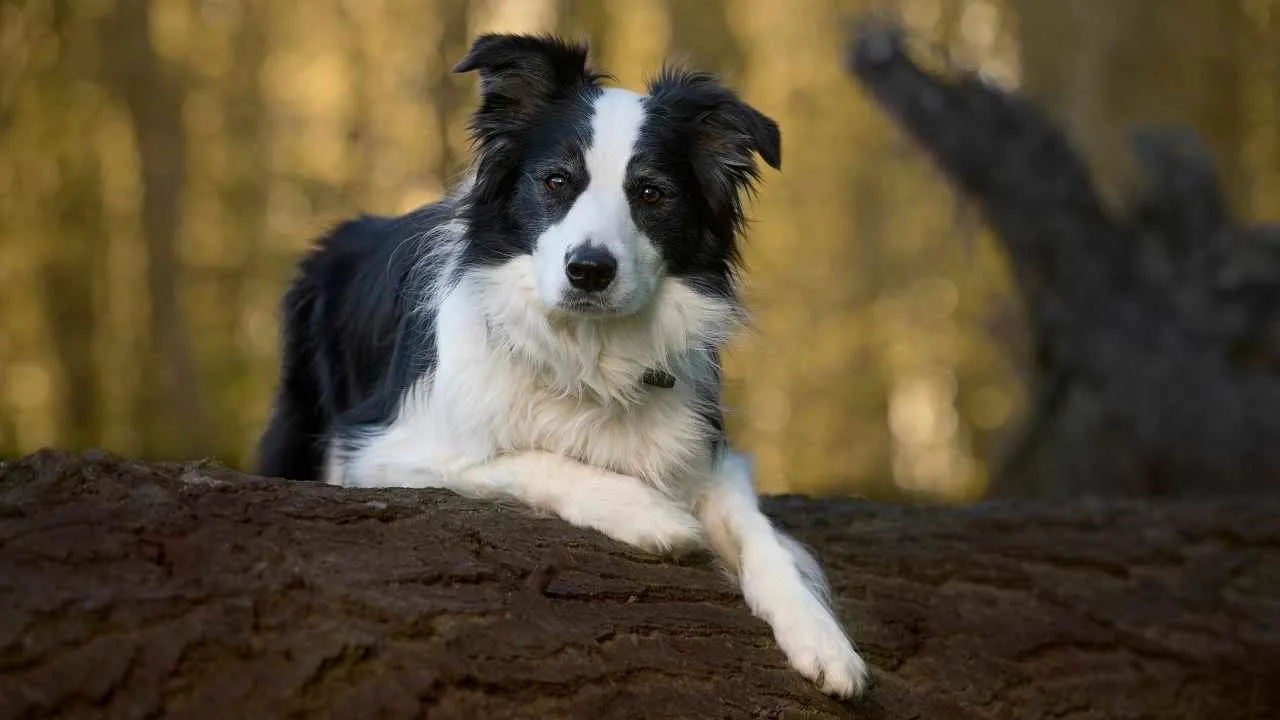
If ranch life had a valedictorian, it’d be the Border Collie—no debate. These medium-sized brainiacs don’t just herd; they strategize.
Border Collies typically weigh between 30 and 55 pounds and stand about 18 to 22 inches tall. They usually sport a medium-length, double coat with wavy hair, though short-haired varieties are also common. Their popular colors range from classic black and white to all-black, red, lilac, and blue.
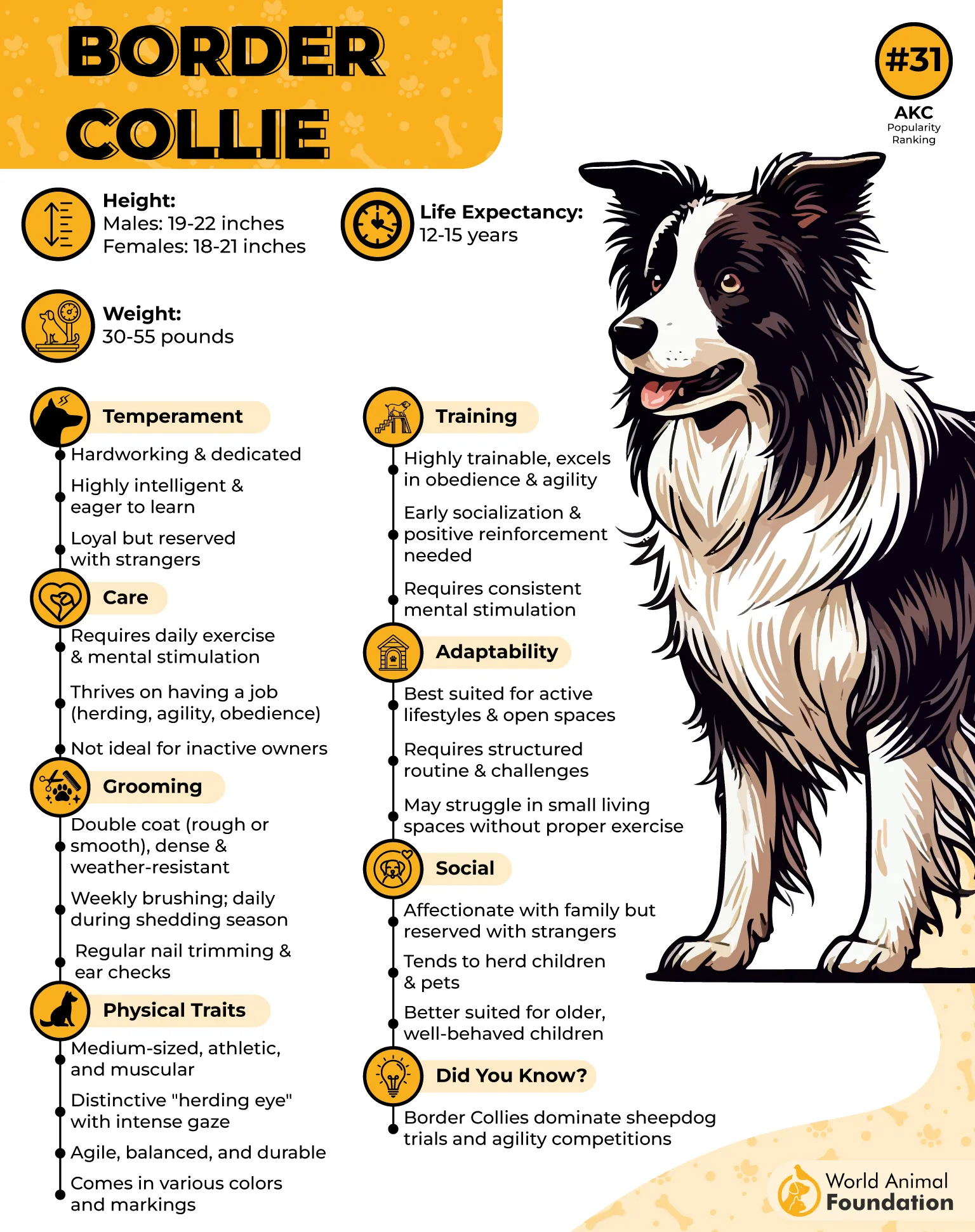
With intense eyes that can practically hypnotize sheep into a neat little circle, Border Collies are like living drones—swift, silent, and shockingly smart. These intelligent dogs were born to work, and if they’re not solving ranch problems, they’ll start inventing new ones just to stay busy.
Need someone to move 30 cattle across a field with military precision? Call a Border Collie. Need someone to sort your laundry by color and type? Honestly… still probably a Border Collie.
Intelligence: Off the charts. Can outthink you before you’ve had coffee.
Energy: Nuclear. Don’t even try tiring them out.
Focus: Laser-sharp—especially when livestock is involved.
Best Job: Herding anything with legs (and maybe even toddlers on a sugar rush).
These energetic dogs require at least one to two hours of daily exercise, especially when young. Older Border Collies with mobility concerns, like arthritis, may do well with around 30 minutes of gentle activity each day.
Warning: Bored Border Collies will redecorate your yard, rearrange your furniture, and start a one-dog agility course using your mailbox. They need purpose like ranchers need boots.
6. Pembroke Welsh Corgi
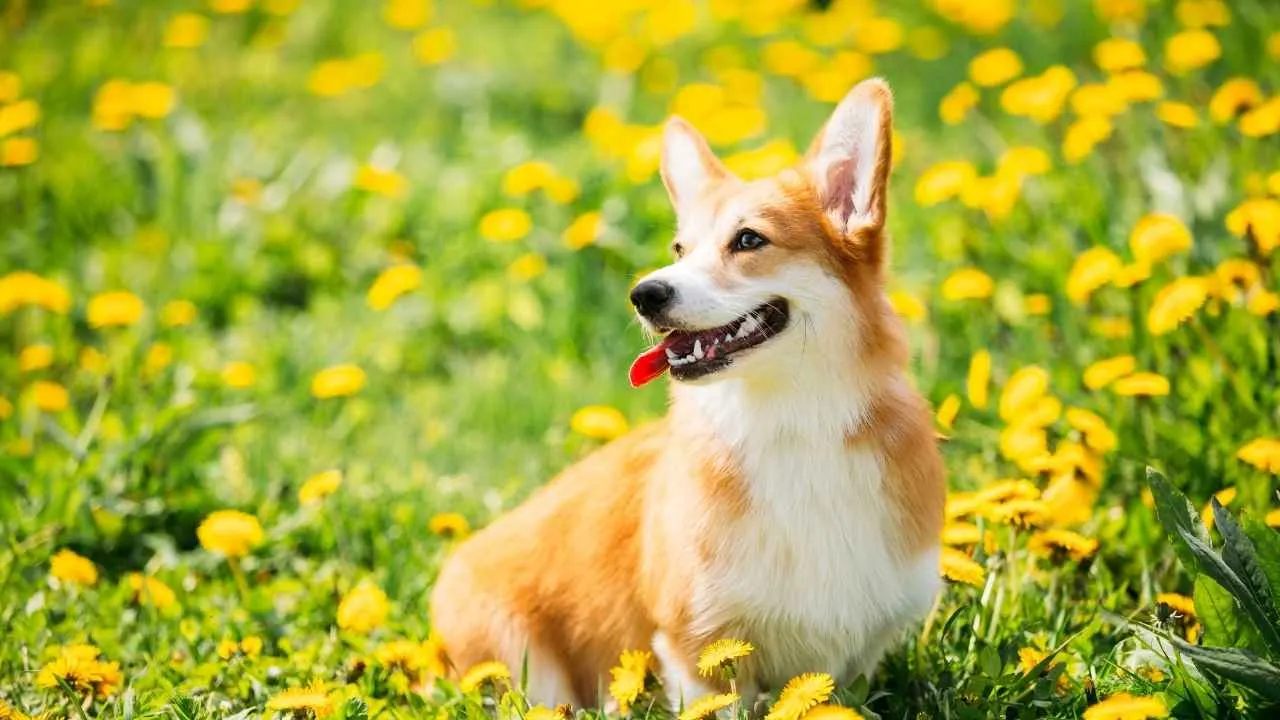
Don’t let those stubby legs and royal connections fool you—Pembroke Welsh Corgis are ranch dogs with serious hustle. According to the American Kennel Club (AKC), Pembroke Welsh Corgis rank among the world’s most popular herding breeds.
Though compact at 10 to 12 inches tall and weighing between 27 to 30 pounds, a sturdy male Pembroke carries the presence of a much larger dog.
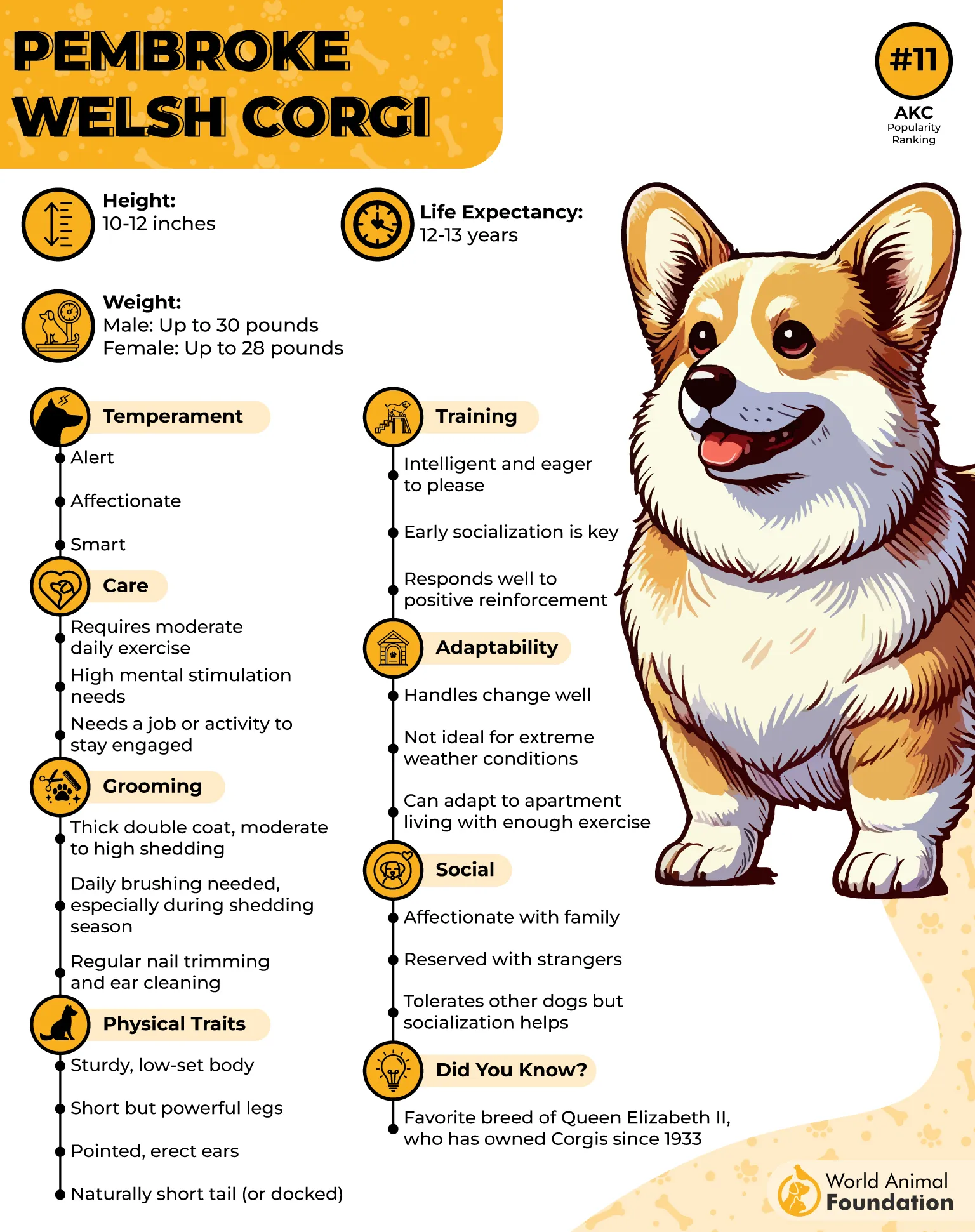
Originally bred in Wales to herd cattle, these pint-sized powerhouses are like furry ATVs: low to the ground, quick on their paws, and absolutely relentless when it comes to rounding up livestock (or children, or chickens, or shadows).
Despite barely clearing the grass, Corgis nip at heels and zigzag like pros, dodging hooves and outwitting larger animals with sheer confidence. They’ve got the heart of a lion and the height of a loaf of bread—and it works.
Size: Compact, but don’t underestimate the wiggle.
Speed & Agility: Fast, nimble, and surprisingly athletic for a dog that’s mostly torso.
Personality: Bold, bossy, and charming with a side of sass.
Best Job: Herding cattle, protecting the yard, and being everyone’s favorite short king/queen.
Known for their sharp senses and surprisingly powerful “big dog” bark, they make vigilant watchdogs. Families that can keep up with their bold yet gentle nature and provide plenty of activity and companionship will be rewarded with an incredibly loyal and loving companion.
Bonus Trivia: Queen Elizabeth II had over 30 Corgis, but not a single one ever wore a cowboy hat. Tragic.
7. Catahoula Leopard Dog
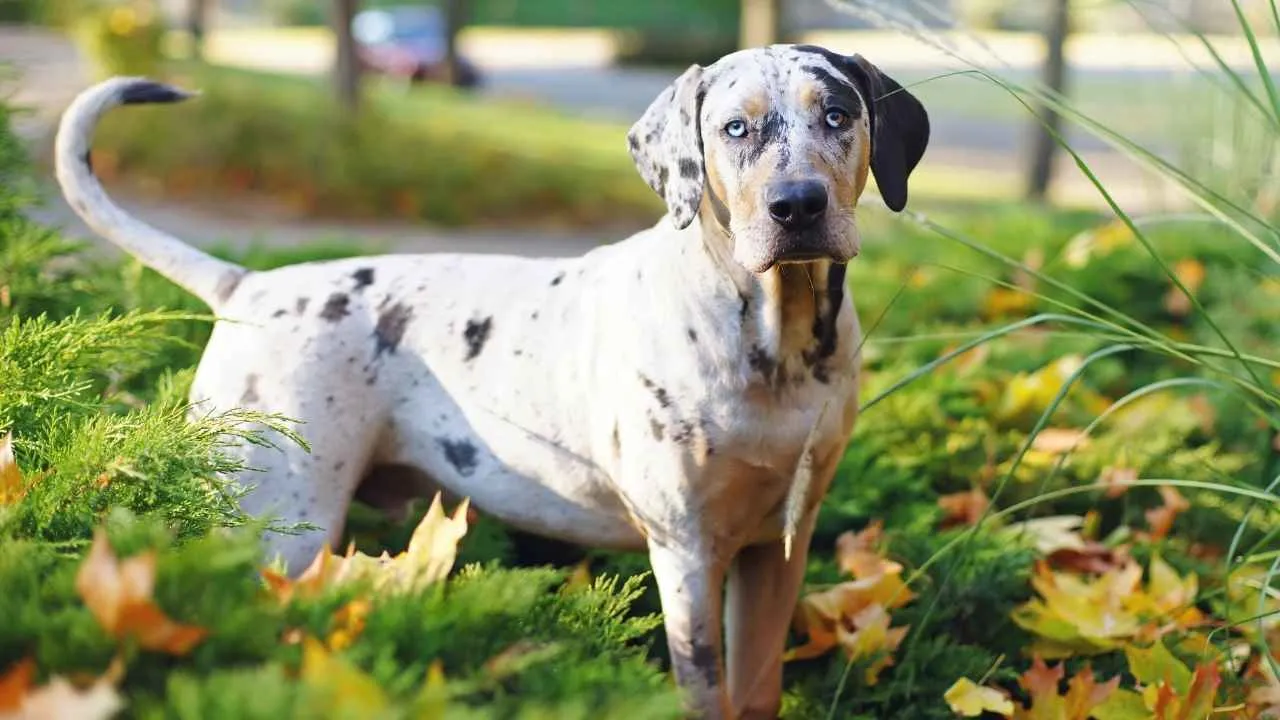
The Catahoula Leopard Dog doesn’t work on a ranch—he runs it. Born and bred in Louisiana for herding wild hogs and tracking game through dense swampland, this dog has no time for indecision or dawdling.
With their striking leopard-spotted coats and piercing eyes (sometimes two different colors, just for flair), they look like they walked straight out of an action movie… and they act like it, too.
Energy Level: Off the charts. This dog is the living embodiment of “rise and grind.”
Work Drive: Extreme. If it moves, the Catahoula will herd it. If it doesn’t move, they’ll still try.
Personality: Confident, intense, and fiercely independent—but loyal to their people.
Best Job: Herding cattle, chasing varmints, and guarding the property like a canine sheriff.
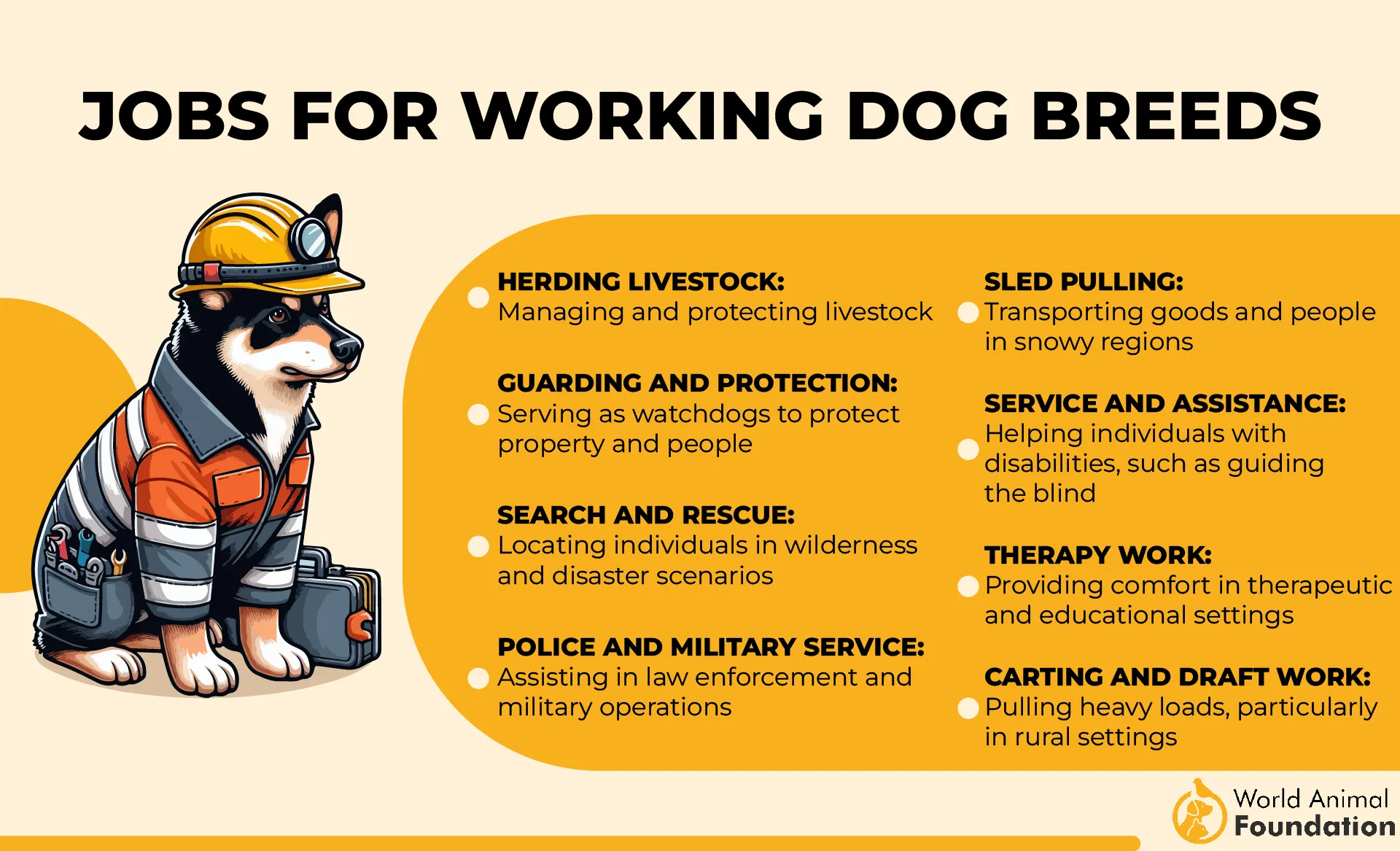
Male Catahoulas may show aggression toward other male dogs, largely due to their strong working instincts. However, with early socialization and being raised alongside other dogs, they can often learn to coexist peacefully.
While they’re not known for excessive barking, Catahoulas will use their voice to alert you when necessary, though some individuals are naturally more vocal than others.
Heads up: This isn’t your average fetch-loving fluffball. Catahoulas thrive with a job, a purpose, and a human who can match their energy. Apartment dwellers? You’ve been warned.
Conclusion
Other ranch dog breeds like the Jack Russell Terrier, Anatolian Shepherd, Belgian Sheepdog, and Belgian Malinois are highly trainable and well-suited for farm life and rural settings. Known for their intelligence and herding abilities, and protective guardian instincts, these all-around farm dogs—including German Shepherds, Dutch Shepherds, and Airedale Terriers—excel at handling various challenges such as hunting, protecting small animals, and performing farm work.
Many dog breeds, like Rat Terriers and Labrador Retrievers, also make great pets and excellent companions for family members. Whether rescued or raised as puppies, these dogs thrive with proper training and love, making them essential helpers on any ranch or farm.


